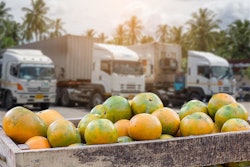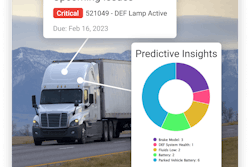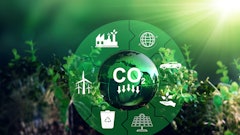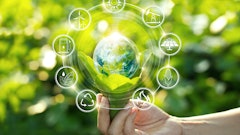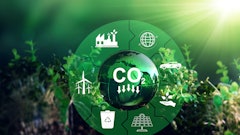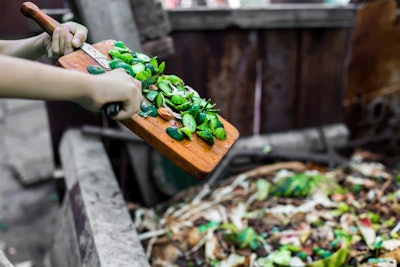
Food waste awareness may be on the rise, but so is the amount of uneaten food in the United States. From farm to fork, food is squandered throughout the entire food supply chain. In fact, nearly 40% of the food in the United States is discarded.
This highlights a bigger problem: the mindset around food waste and its significance. Not only is food discarded for unnecessary subjective reasons, such as unmet cosmetic standards, but the effects of food waste are not fully acknowledged. When food ends up in landfills, it releases methane, a greenhouse gas that is 80 times more potent than carbon dioxide over a 20-year period. Besides, it’s not only food that is going to waste but also all the resources that are utilized when producing, processing, transporting, preparing and storing it. In fact, the carbon dioxide emissions from food waste are equivalent to those of 42 coal-fired power plants.
From the difficulty of quantifying food waste along the food chain to the lack of awareness regarding this issue and the perception of waste in many developed countries, these are a few of the reasons why the impact of food waste on climate change is often overlooked. Still, like a double-edged sword, both the danger and the potential of food waste are boundless.
The danger and potential of different types of food waste
The fact that waste occurs throughout the entire food chain is well-known and accepted. However, thinking of food waste this way can also mean amalgamating all the factors that lead to it and, consequently, making it harder to reduce waste across the entire chain. That’s why it’s important to analyze not only where waste is specifically generated in the food chain but also how it can be diminished or valorized in different instances.
For starters, food waste begins in the first stage of the supply chain, at the farm, where more than 15% of food is lost before it leaves. From biological and environmental factors that can damage crops to inadequate technology and storage, these are a few of the factors that lead to agricultural waste. That being said, despite having better infrastructure and higher-quality technology, middle- and high-income regions account for 58% of the global farm-stage food waste. Hence, some significant factors for agricultural waste are the saturation of the markets and the normalization of overproduction.
Similarly, pre-consumer waste refers, as the name suggests, to the food that is squandered during the production and processing stages of the food chain before it reaches consumers. Items that don’t meet cosmetic standards, food that is spoiled due to improper transportation, or surplus food at supermarkets are only a few examples of pre-consumer waste. Not only do these contribute to greenhouse gas emissions, but they also encompass a large amount of "invisible” ’resources used in food production, such as water, energy, and land.
That being said, the potential of this waste is boundless, as both agricultural and pre-consumer waste can be used not only for animal feed but also for composting and producing biogas or fertilizer through anaerobic digestion.
Finally, post-consumer waste occurs either at home or at foodservice establishments and consists of the food that is discarded by consumers. In fact, in the United Kingdom, nearly 70% of all food waste comes from households. However, through methods such as composting, donating surplus food, using leftover food, and even something as simple as analyzing our buying habits, we can have an impact on post-consumer waste. Again, it’s not food that's the problem, but our perception of it and of when it becomes waste.
Tackling food waste one innovative solution at a time
Since one of the 2030 SDGs is sustainable consumption and production, food waste minimization and valorization should start being prioritized. In fact, ReFED’s 2030 roadmap estimates that with the necessary policy changes and investments, the United States could reduce food waste by 45 million tons annually, minimize GHG emissions by 75 million metric tons, and rescue food worth four billion meals for people in need.
However, for that to be possible, innovation is key. For instance, these are some of the technologies and techniques that are being implemented to tackle food waste across the supply chain:
● Intelligent packaging. Through sensors and labels, intelligent packaging can detect and measure environmental conditions that can affect the quality of the food. In fact, with intelligent packaging, consumers and others involved in the food supply chain can be informed about the food's condition. Not only does this invention improve shelf life and food safety, but by doing so, it also reduces food waste.
● Demand planning. Forecasting the demand for food products enables manufacturers and retailers to adjust their production and inventory levels to reduce waste. After all, older systems might not consider past data or the perishability of a product, thereby resulting in overordering.
● Upcycling. According to the Upcycled Food Organization, upcycled food is made out of ingredients that would have otherwise been discarded. From making croutons out of stale bread to companies using "ugly" fruits to make smoothies or juices, these are just some examples of upcycling. Upcycled food is diverting food waste from landfills and, consequently, reducing greenhouse gas emissions while also feeding the growing population without adding environmental pressure.
● Composting. Coffee grounds, eggshells, vegetable scraps—these are just some of the items that can be composted. As "nature’s way of recycling", composting not only ensures that organic waste does not end up in landfills, but it also reduces synthetic fertilizers, adds organic matter and nutrients to the soil, and minimizes risks of soil erosion.
● Precision agriculture. Through technologies such as soil sensors, ICT, or field mapping, crop quality is enhanced, thereby improving efficiency, increasing profitability, and, ultimately, cutting waste.
● Anaerobic digestion. This process consists of microorganisms breaking down organic materials in the absence of oxygen and thereby producing biogas, which can be used to generate energy or heat. So, not only does anaerobic digestion divert waste from landfills and prevent methane emissions, but it also generates a renewable source of energy.
The hidden value of food waste
Food waste accounts for 10% of total global emissions, so minimizing it is no longer an option; it’s a necessity.
In fact, the effects of food waste are noticeable not only from an environmental standpoint but also from an economic and social one. Like a vicious cycle, food waste, food insecurity and food prices are all rising simultaneously. So, an equitable food system would not only mean reduced greenhouse gas emissions and improved biodiversity but also increased food security and nutrition as well as saved costs. The potential of waste is boundless.





